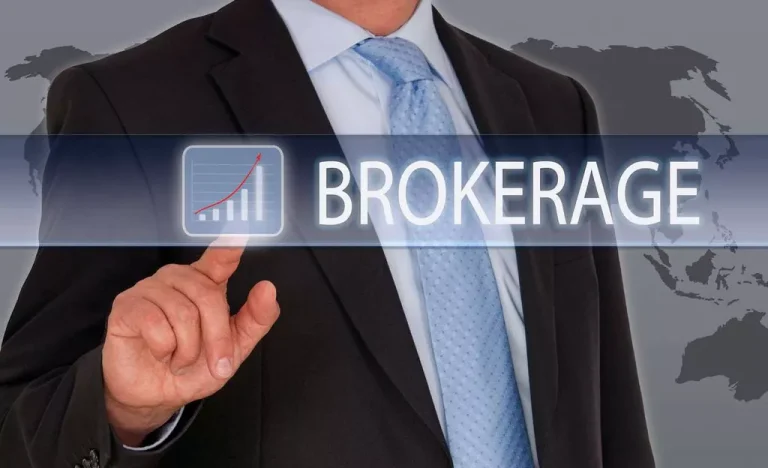FinTech
Buy-side Vs Sell-side Trading: Whats The Difference?
As such, they can obtain substantial bonuses if their suggested investments perform nicely, reflecting the direct influence of their work on the fund’s success. Understanding the intricacies of the hierarchy among the purchase side and sell aspect funding banking is significant for industry practitioners and investors. On the purchase side, it emphasizes long-term funding plans and asset administration.

Sell-side analysts also meet with firm administration groups to gather info and insights into their enterprise operations. Buy-side analysts work for institutions that make investments money on behalf of their purchasers, corresponding to mutual funds, pension funds, hedge funds, and insurance corporations. These analysts conduct in-depth research on securities, sectors, and markets to assist their employers make higher investment decisions. Professionals on the purchase side usually work in portfolio administration, wealth administration, non-public fairness, hedge funds and generally venture capital. Buy-side firms work to establish and purchase underpriced, undervalued, or high-potential securities for shoppers to have the ability to make the highest revenue on their trades. Financial advisors on the sell-side typically work for broker-dealers or funding banks.
- By comparability, sell-side analysts research specific industries or sectors to generate gross sales of financial products.
- On the sell-side, Broker B supplies market providers, such as access to the inventory exchange.
- These are terms that get thrown round a lot in finance, but if you’re new to this world, they might sound a bit mysterious or complicated.
- They have to create value by figuring out and buying underpriced securities.
- The buy side and promote side are two fundamental elements of the monetary markets.
Once a business thought has been proven out, an organization will sometimes approach Growth Equity Investors. Money from Growth Equity Investors will assist the enterprise develop (i.e., scale) as quickly as potential. Private Market Investors (broadly referred to as ‘Private Equity’) purchase and promote ‘Private’ interests in corporations starting from small stakes to full firm possession.
Sell-side entities together with funding banks and brokerage firms do an extraordinary job in promoting new financial products, presenting analytical research reports, and executing trades for purchasers. These operations benefit not solely buy-side institutions but also facilitate easy functioning and aggressive pricing for personal investors. Their shoppers are sometimes particular person traders who’ve a shorter investment horizon and are looking for funding alternatives that will generate short-term returns. Buy-side analysts often work for hedge funds, pension funds, or non-public fairness teams and receive compensation based mostly on the accuracy of their investment suggestions. In distinction, sell-side analysts typically work for investment banks or brokerages and are compensated on the quality of their research and how much revenue it generates.

What Does A Sell-side Analyst Do?s
It can be possible for one firm to have both buy-side and sell-side wings, particularly in massive banks. To avoid potential conflicts of curiosity, these companies must enact Chinese wall insurance policies to separate the 2 kinds of departments. Sell-side analysts are the ones who rate a company’s inventory as buy, promote, or hold. It’s generally taken as an analysis of the stock’s efficiency somewhat than the company’s.
Understanding the differences between buy-side and sell-side analysts is crucial for anybody thinking about pursuing a profession in finance or investing. Buy-side analysts usually have robust analytical expertise and are glorious at figuring out undervalued securities. Sell-side analysts, on the opposite hand, want robust communication skills to convey their recommendations effectively. Buy-side and sell-side analysts are two various sorts of monetary analysts that work in the investment industry. Understanding the interaction between the buy-side and sell-side can therefore help people and employers make extra knowledgeable choices about retirement planning and funding.
At the buy-side establishments, analysts are expected to develop deep expertise https://www.xcritical.com/ into a particular area of the market. Their funding universe can be defined in various methods at a sector, region, market cap or funding type degree. The number of stocks they cowl is extremely dependent on the firm’s useful resource and the strategy’s needs and can differ significantly. For instance, a big global asset supervisor can run a strategy which seeks to take a position throughout holdings and has a group of 2 portfolio managers and 7 analysts.

Financial analysis will give consideration to the elements of the deal, ensuring all geese are in order for the transaction to proceed easily. As we mentioned in the video, Investment Banks (IB) are known as the Sellside. These companies supply a variety of providers that help Buyside Investors execute transactions. Investment Banks additionally Mining pool sell Advisory (M&A and Restructuring) and Capital Raising (Debt and Equity) providers to giant company corporations.
Buy-side Vs Sell-side Analysts Faqs
Buy-side and sell-side analysts additionally should abide by totally different rules and standards. To learn extra about every of these profession paths, check out our interactive profession map. Financial markets include two main sectors–the sell-side and the buy-side. DealRoom facilitates numerous M&A transactions annually for organizations throughout each sectors. Companies that seek an exit strategy by way of M&A sometimes work with a sell-side partner to establish potential patrons.
The main objective is to offer more detailed insights into the primary industry developments, the facility behind them, and the effects these deliver concerning stockholders. Buy-side alternatives are usually more limited compared to these in sell-side. They additionally require extra experience and are sometimes perceived by many including those working on the sell-side. While brokerage and advisory companies provide no publicity to portfolio administration and asset allocation actions, the buy-side is a place the place funding professionals can develop these expertise. The key accountability of a sell-side research analyst is to provide quality funding analysis that may be offered to other institutions and traders. Unlike their buy-side friends, sell-side analysts aren’t buyside sellside involved in direct investing.
These analysts conduct research and advise the money managers within their funds. Buy-side analysts work for firms that manage money, similar to hedge funds and private equity groups. In distinction, sell-side analysts work for establishments that promote monetary products, such as funding banks and brokerages. Over their careers, monetary analysts could change between the purchase and promote sides as they develop contacts and areas of experience. The promote side is an indispensable ingredient in all financial systems, being a provider of unique services to the final but not the least envisaged market participant.
Public Market Investor #2: Long/short
JPMorgan Chase, Goldman Sachs, and Morgan Stanley are examples of sell-side firms. These firms provide investment banking, sales, and trading providers to institutional and individual purchasers. Sell-side corporations play a crucial position in the monetary markets by offering the infrastructure and companies that facilitate the shopping for and promoting of securities. They also provide a spread of different services, including financial advisory services, research, and market making.
